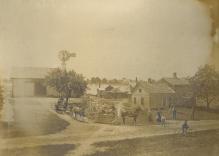

In 1900 the Godwin area was still almost entirely farms. The large 160 to 640 acre family farms of the mid 1850s were gradually being subdivided, and according to a 1907 Kent County plat map, there were a large number of 10, 20, and 40 acre farms along Division Avenue in the area of Godwin. The next step would be to suddivide the small farms in to housing plats. As happened all over the US, at some point the owners of a farm die, and those that inherit the land sell it to developers.
Photograph provided by John Kamstra, a local collector.
Located at 112 Allen Road ( now 112 36th Street ), the image above of the 10 acre Jared A. Keyes farm was likely taken around 1900. Born October 16, 1867, in to a large family of Keyes in the area, Jared Keyes was listed in the 1900 US Census for Paris Township as being a market gardener, and was renting the farm shown. By 1910 he apparently owned the farm, and was listed in the census as being a truck farmer. ( So was Frank Rackett at about this time. ) He died July 31, 1941. At the time of his death, the 10 acre parcel of land to the east of Jared A. Keyes farm was owned by Mrs. Horace Keyes. The house corresponding to that land stood on the southwest corner of Jefferson ( which only existed between 32nd and 36th in 1907 ). In the late 1950s the house was demolished, and an office building erected, which still exists in year 2007.
The houses shown above the greenhouses in the photo above appear to be on the west side of Division Avenue. It would be guesswork to say just who owned the large white house, for example, and the old farm houses along Division Avenue near 36th Street are all long gone in year 2007.
Note the dirt paths just above the horse in the photo above. Many older photos around the Godwin area show similar paths. People soon find the shortest path between two points, and these paths develop. In some photographs one can see these paths leading to Godwin, as kids all over the area found the best cut throughs from their homes to the school.
Perhaps after Jared keyes died in 1941, his land, and maybe the two small farms to the west of his, were sold for development. Francis and Keyes (now Horton ) were put in around this time, and are somewhat unusual in that they run north-south, rather than the more typical east-west arrangement of most of the streets in the area, which then end on Division and Jefferson ( Paris in 1907 ) Avenues. Some of the earliest examples of this were Exchange, Lexington, and Godwin Avenues, which are on the east side of Division Avenue, and south of 32nd Street ( Pennel Avenue in 1907 ). These were apparently subdivisions of the land owned by Clements. But in the early decades of the 20th century land ownership in the Godwin area was starting to change hands rapidly. The interurban line west of Division Avenue, opened in 1913, and later the Division Avenue bus line, which started operation in 1924 ( see section "D" ) made access to jobs in Grand Rapids from the Godwin area possible, and farm land was quickly platted for houses. Most of the Godwin farm had been sold off piecemeal, first as smaller farms, which then became housing. Frank Rackett sold his land to the school, and by 1948 he had left the area. The Godwin farm house burned in 1954, and one by one the farmhouses along Division Avenue disappeared. The farm house north of the Twin Cabins Tourist Court was likely the main house for the E. Lynch farm, which at one time owned the land that Godwin now occupies on the east side of Division Avenue. The Charity Payne ( later, Frank Rackett ) farm is now part of the Godwin school system, and has been since about 1937. The last piece, the land on the northwest corner of 36th and Division Avenue, formally became school property when Frank Rackett died, in about June, 1959.

It's not clear when Fred Hof(f)man left the location. He lived on Calhoun, and like many of the
business owners along Division, he lived in the community. Many barber shops folded,
or nearly did so, in the 1960s and later as fashion ran to longer hair,
infrequent hair cuts, and both sex hair establishments as men's hair
style became more elaborate. As can be seen in the
photographs below, the building still stands as of December, 2003.
The building still houses a barber shop. The barber pole is now
gone, and the green overhangs over the entrance and the front
window did not exist in the 1950s. The tan paint on the bricks
is probably more recent.
Left click on the images below for larger versions.

December 4, 2003. |
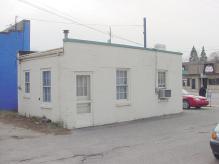
December 4, 2003. |

March 23, 2005. |
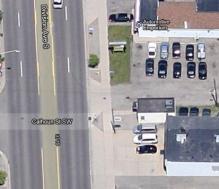
Summer, 2012. |
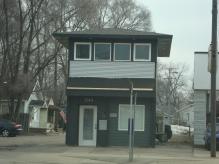
March 15, 2013. |
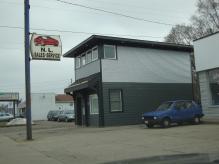
March 15, 2013. |
Left click on the images below for larger versions.
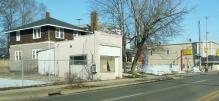
About 1821 Divison. |
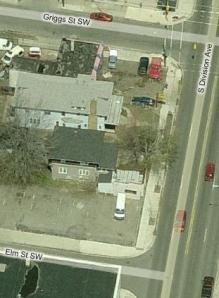
|
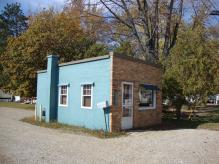
6569 Divison - Oct., 2012. |

Image supplied by the Kentwood Historic Preservation Commission.
The Godwin Heights fire department is shown in a 1929 photograph. A volunteer organization even in to the 1960s yet, a call to the department would use the following directions. ( From an item in a 1929 scrap book compiled by the mother of Joanne (Dulyea) Hamilton, class of 1951 ) Those on the list to be call were familiar names in the Godwin area in 1929.
Left click on the image below for a larger version.
Image supplied by Lillian Annis, class of 1941.
Where this firehouse stood is not clear - there are no obvious landmarks in the photograph.
Left click on the images below for larger versions.

|

|
Left click on the image below for a larger version.
The Godwin Heights fire department building at 3625 Horton Ave. ( Formerly Keyes Street. ) as it appeared on September 25, 2004, is shown above. Gray paint removes a sense of age that the former red brick construction imparted to the building. The covered windows and the fence are probably a modern reality. Just when the building was erected is not known here.

Left click on the images below for larger versions.
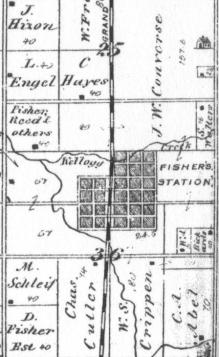
|

|

